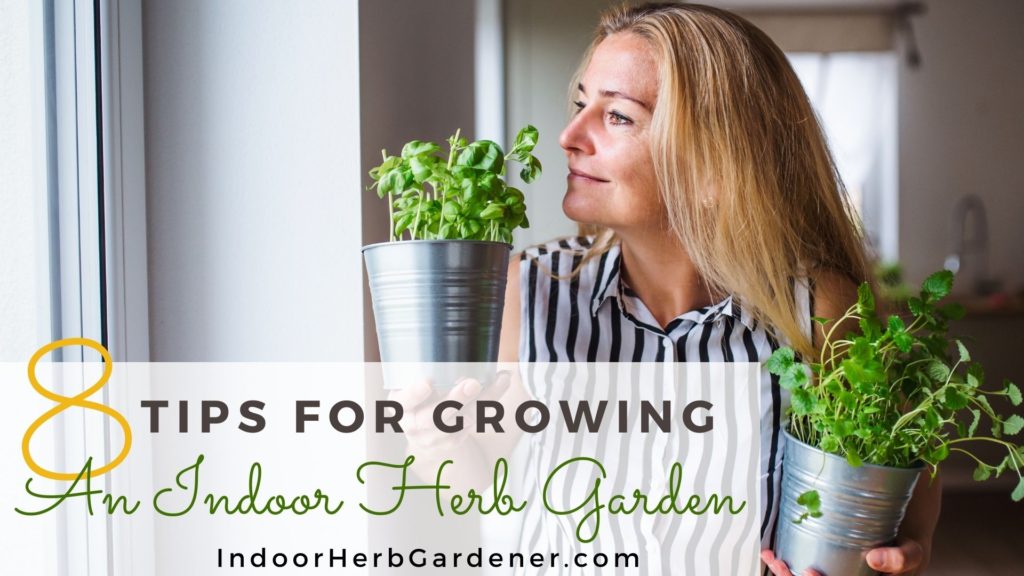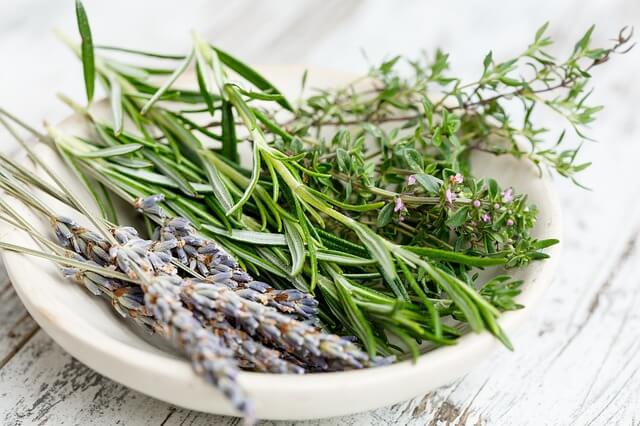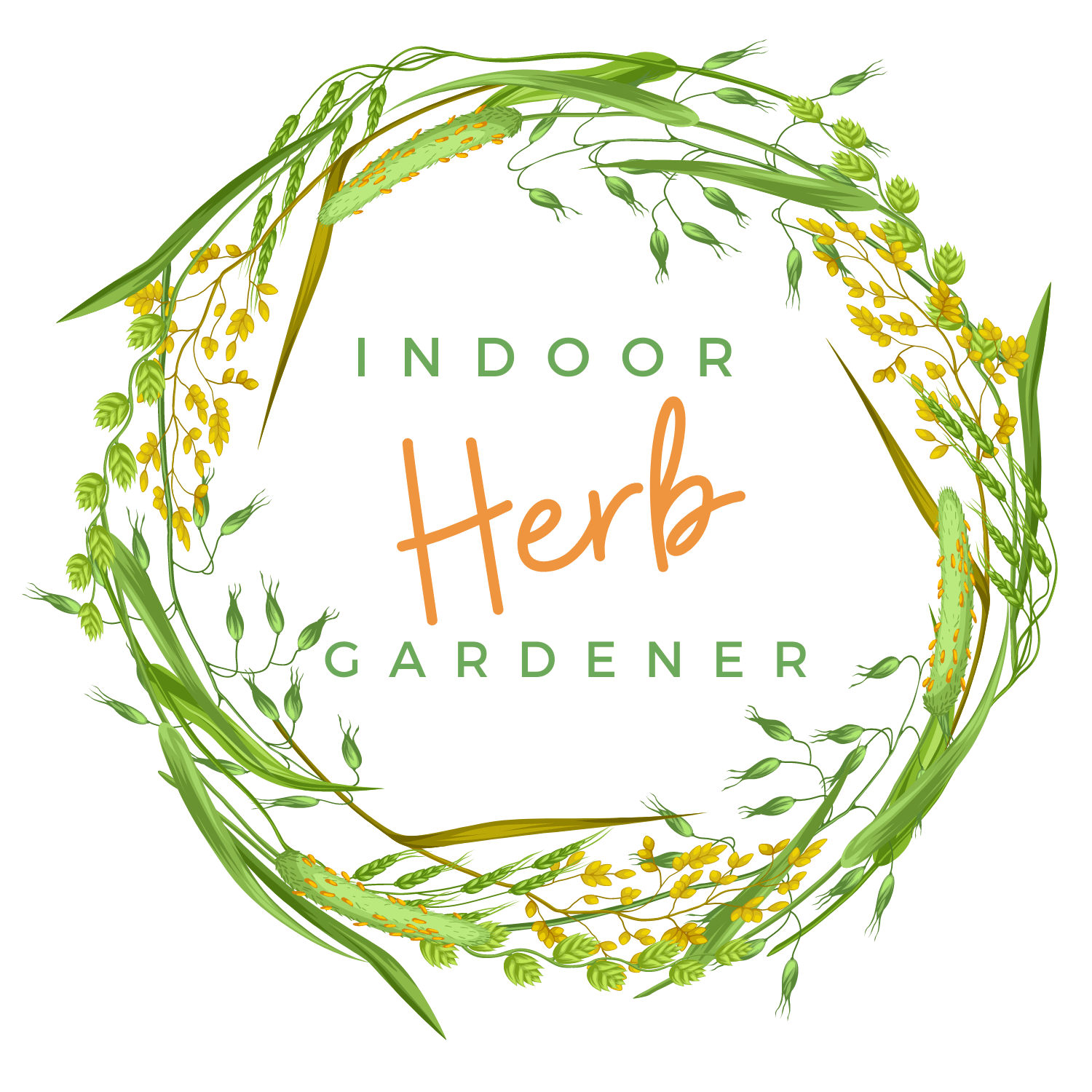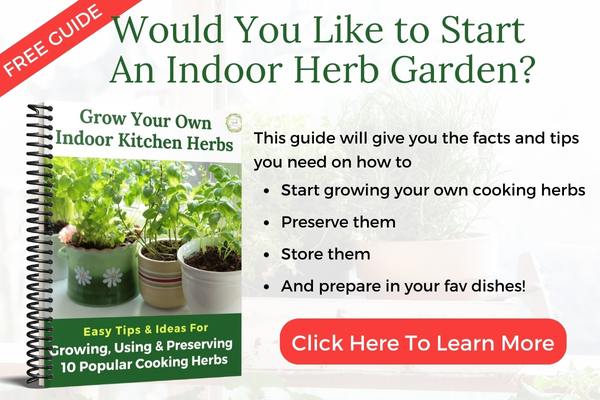Hey! By the way… IndoorHerbGardener is reader-supported. When you buy through links on our site, we may earn an affiliate commission and as an Amazon affiliate, we earn from qualifying purchases. Thanks in advance for your support!

Fresh herbs are a wonderful addition to meals, providing great flavor and health benefits. The amazing thing is that there are plenty of herbs you can grow in your house without the need for a home garden. All you need are a few window sills with proper sunlight (OR a few grow lights), water, and a few plant pots.
- Adequate Sun Exposure – Most herbs need sun for about six to eight hours a day, so make sure you find a location in your house that offers this amount of sunlight. Proper sunlight is also responsible for the flavor of your herbs. The more sunlight they get, the better the flavor. If strong sunlight is a challenge for you then consider investing in a few inexpensive grow lights. WORTH it!
- Proper Temperature – Keep the temperatures in your house or the room the herbs are located in at around 65 to 75 degrees Fahrenheit. If you need to reduce the growth of herbs, reduce the temperatures to about 60 degrees Fahrenheit.
- Water – Herbs need a moderate amount of water daily. It is best to keep the soil of (most) herbs damp. Watering can easily be forgotten, so make a plan and keep to a schedule. Remember, since the herbs are indoors they do not get water from rain, so it is up to you to keep up with it. Make sure you research the particular herbs you grow though because some herbs like oregano and thyme need much less water and will die if you don’t comply with their demands!
- Keep Herbs Separate – For long-term success, you should keep your herbs separate. This way they can each get the individual attention they need. It also helps with plant rotation, and if one plant gets a disease the others don’t have to suffer.
- Proper Containers – Containers need to have proper drainage so that the herbs are not sitting in too much water. Add a thin layer of rocks to the bottom of your pots before filling with soil to allow the water to settle there instead of in the soil. I would even go so far as to poke or drill a few holes in the bottom of the container – if they don’t already have some. Then make sure that container sits on a plate or in another container to ensure you don’t have water leaking on your floor.
- Rotate – Herbs need proper rotation under the sun to help with air circulation and to prevent mold. Turn your plants or rotate them a little every day so that each side gets the right amount of sun. This will also promote even growth.
- Special Potting Mix – Indoor herbs need special attention when it comes to soil because it needs to provide more drainage. Dirt from the ground is too compact and usually less nutritious. Make sure you pick a soil that is listed for organic indoor gardens.
- Feed with Fertilizer – Fertilize your herbs once a week to promote strong growth. The best organic fertilizers for herbs are seaweed extract or fish based.

Keep these tips in mind when starting or growing your indoor garden. The best part about having an herb garden in your kitchen is that they are readily available when you need them – and freshly picked herbs taste sooo good!

